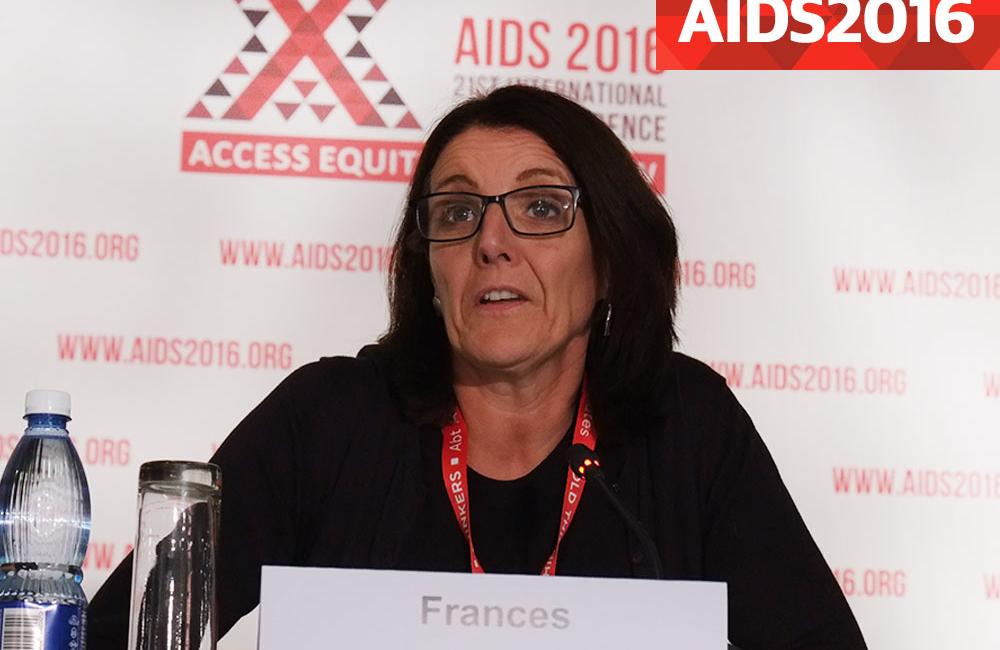
A randomised trial in female sex workers in Zimbabwe, offering enhanced access to HIV treatment and pre-exposure prophylaxis (PrEP), has failed to show that the extra services helped reduce the proportion with detectable viral load, Frances Cowan told the 21st International AIDS Conference (AIDS 2016) in Durban today.
It appears that the comprehensive set of sex worker-friendly services which were offered in the control arm may have already been enough to substantially improve the health of participants.
While this set of services was described as the ‘usual care’ and is in line with World Health Organization guidelines, the reality is that a comprehensive package of quality services for sex workers is rarely fully delivered. The services included free condoms and contraception, HIV testing and counselling, referral to government clinics for HIV treatment, management of sexually transmitted infections, health education and legal advice supported by a network of peer educators.
In seven communities – forming the control group – this package of care was provided.
In a further seven communities – forming the intervention group – the same services were provided, as well as the following additional elements:
- HIV treatment available at the sex worker clinic (rather than referral to a government clinic)
- For women testing HIV-negative, SMS reminders to encourage repeat HIV testing
- For women testing HIV-negative, the offer of PrEP
- Adherence support programme for women taking HIV treatment or PrEP
- Intensified community mobilisation activities.
The communities, spread across Zimbabwe, were locations where several hundred women sold sex and where there was a primary care clinic providing dedicated services to sex workers.
The primary endpoint was the proportion of female sex workers who could be infectious with HIV, in other words with an HIV viral load above 1000 copies/ml. The trial was therefore innovative in considering a woman with an undetectable viral load as equivalent to a woman who does not have HIV.
When the trial began in 2013, approximately 200 female sex workers were recruited in each community and tested for HIV antibodies and viral load. In April this year, 200 female sex workers in each community (not necessarily the same individuals) were recruited and tested in the same way.
The women were recruited through respondent-driven sampling (RDS), in which the first women recruited by the researchers invite their peers to participate too. Women who took part in the surveys were not necessarily clients of the interventions, but were women living and working in the area.
Results
The study confirmed that female sex workers in Zimbabwe are at extremely high risk of HIV. When the trial began, around six-in-ten respondents were living with HIV, of whom two-thirds were aware of their status. Of those aware of their status, two-thirds said they were taking HIV treatment.
In that first survey, 30% of all women in both the control and intervention groups had an HIV viral load above 1000 copies/ml.
In the survey at the end of the study, the proportion with infectious HIV was substantially lower in both the control group (19%) and the intervention group (16%). The difference between these figures was not statistically significant. At the same time, the overall proportion of women living with HIV did not change.
In other words, the proportion with infectious HIV decreased over time in both groups. This may have been due to the services for sex workers being of higher quality than they had previously been or access to HIV treatment generally improving in the country. In any case, the additional services provided in intervention communities did not make a substantial difference to the final outcome.
The cascade of care was strong in both groups at the end of the study. In the control group, 80% of women living with HIV had been diagnosed, 83% of diagnosed women were on treatment and 88% of women on treatment had an undetectable viral load. Results were similar in the intervention group.
The results were similar despite a greater volume of clinic activity in the intervention communities and women there having been much more likely to be reached by peer education, community mobilisation or adherence support.
When planning the study, the researchers expected the on-site provision of HIV treatment to have a greater impact on the primary outcome than the availability of PrEP. Nonetheless they note that demand for PrEP was relatively limited in the intervention communities: while over 1300 women were offered PrEP, around 500 began it and only around 280 are still on PrEP today.
Women expressed concerns about PrEP adherence and side-effects, as well as suspicion about the manner in which PrEP was being specifically targeted towards sex workers. For women who chose to take PrEP, informal peer support from other sex workers, including women taking HIV treatment, helped allay some of these concerns.
Frances Cowan concluded that the enhanced intervention did not add a significant contribution on top of the existing programme to reducing the proportion of sex workers in the community with a detectable viral load.
Cowan F et al. Results of the SAPPH-IRe Trial: a cluster randomised trial of a combination intervention to empower female sex workers in Zimbabwe to link and adhere to antiretrovirals for treatment and prevention. 21st International AIDS Conference, Durban, abstract TUAX0103LB, 2016.
View the abstract on the conference website.
Download the presentation slides from the conference website.
